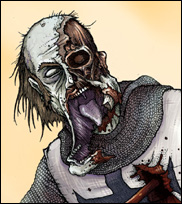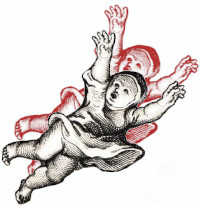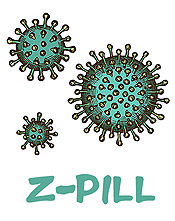Sir Lord Baltimore
commented on
Jul-11-2015
10:05 PM EDT
"I too have a question/comment. Another thing to watch for aside from head trauma are injuries to the rotator cuff and shoulders when boxing. I am 36 and boxed for about 5-6 years. My right shoulder sustained damage due to my involvement in the sport. I suspect crappy form on my part when training on the heavy bag. Are there any ways to mitigate this? It would be a shame for other people to have to deal with worn out shoulders too. Not that I regret boxing for a second. I miss it. Every damn day."
I am sending this off to my friend David, a Doctor—a man with 'shredded' rotators—who shall hopefully correct or expand on my answers.
The root cause of most boxing shoulder injuries is over development of the front deltoid and compression of the chest, and under development and stretching of the upper back and rear deltoid muscles due to constant forward motion, and the fact that boxers do so little pulling motions. Note the rounded shoulders, pinched chest and stretched out backs of many boxers in the middle weight ranges—who hit hardest for their weight, with Tommy Hearns being the perfect example.
Below are some tips for minimizing shoulder injuries in boxing.
1. Shadowbox more than you hit the heavy bag
2. Hit the speed bag, the only bag that works the rear delts. I use this to help my weak upper back for throwing the backhand in stick fighting.
3. Do not practice the vertical fist 'Philly style' hook until after you have learned the shovel hook
4. Limit hyper-pronated punches to strikes on light bags, and do them slowly when shadowboxing
5. Do doorway chest stretches at the end of a bag work session.
6. Be careful using wing blocks against bigger sparring partners.
7. When clinching against a heavier fighter do not use your wing block as a lever to push him off, but use a shoulder bump instead.
8. When shadow boxing and doing bag work try and pull the punch back more quickly then it went out, and prepare for this by doing tension pulls with rubber bands, ropes, or with a partner [shake hands like bruthas and pull back and forth]
9. When hitting the speed bag do not raise your shoulders and be very careful that if a speed bag is set too high for you to strike without lifting [shrugging] your shoulders, that you lower it or stand on something.
10. The boxer should learn to keep his shoulder low and relaxed at all times and only to shrug them as a defensive maneuver. This makes for better energy transfer and keeps the joints supple.
11. Before training do small radius shoulder rolls and do not advance to windmill rolls, but keep the hands circling no more than the circumference of a boxing glove.
12. After training use a towel, shirt or stick to do reach behind stretches from both sides, but more so to counterbalance your asymmetrical development.
13. The other big danger to the boxer's shoulder and back is the fact that, like a golfer, he is always leading with the same hand and develops muscular imbalances. To minimize this and perhaps be able to deal with a southpaw better, practice as a southpaw one round to three in the gym.
The Punishing Art











All good points by the author. Rotator cuff injuries are a common thing among most human beings. If you are in Baltimore it somehow has become incorrectly known as the "rotor cup." Putting the slang aside, I see 5 rotator cuff problems per day in the generic non athletic population but also see at least 3-4/month in the fight population, even the younger groups. The mechanisms of pitching, throwing, overhead volleyball and swimming, as well as boxing are all culprits, as is age and construction based activity. Sometimes the problem is not just the cuff, but can be the bursa as well. There is also a problem of impingement that is a combination of inflammation and mechanics that lead to "pinching" of the cuff tissue in the arch. The recommendations are good as BALANCE of musculature and flexibility/strength ratios of agonist and antagonist muscles play a big role in keeping the shoulder healthy. Keep in mind the rotator cuff is designed to stabilize the head of the humerus in the joint as well as muscular movement. It's because the upper extremity sacrifices stability for mobility that we see so many shoulder problems. The mitt holder is usually also prone to cuff injuries which is why a good mitt holder gives the proper resistance when receiving strikes. Bang on!